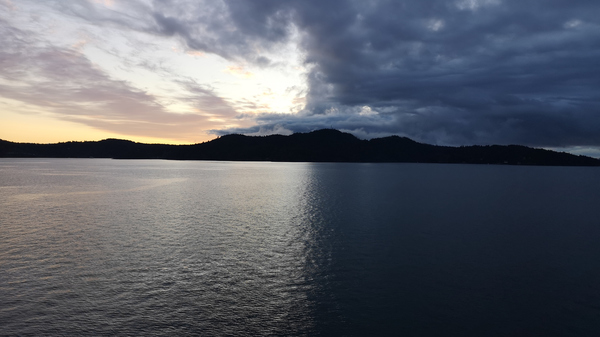What Is the Equilux?
Twice a year, day and night reach a perfect balance of 12 hours each, creating a little-known event called the equilux.

The equilux brings equal hours of day and night.
©iStockphoto.com/Tamar Nadiradze
Equinox—Close, but Not Quite Equal
Many of us think that an even balance of day to night happens during an equinox. After all, the word translates as “equal night.”
So, a little confusion is understandable. But there’s a subtle time difference between an equinox and an equilux.
Approx. equilux dates
| Latitude | March | September |
|---|---|---|
| 60° North | Mar 18 | Sep 25 |
| 55° North | Mar 17 | Sep 25 |
| 50° North | Mar 17 | Sep 25 |
| 45° North | Mar 17 | Sep 25 |
| 40° North | Mar 17 | Sep 26 |
| 35° North | Mar 16 | Sep 26 |
| 30° North | Mar 16 | Sep 27 |
| 25° North | Mar 15 | Sep 27 |
| 20° North | Mar 14 | Sep 28 |
| 15° North | Mar 12 | Sep 30 |
| 10° North | Mar 8 | Oct 4 |
| 5° North | Feb 24 | Oct 17 |
| Equator | No equal day and night | |
| 5° South | Apr 14 | Aug 29 |
| 10° South | Apr 1 | Sep 10 |
| 15° South | Mar 28 | Sep 14 |
| 20° South | Mar 26 | Sep 16 |
| 25° South | Mar 25 | Sep 17 |
| 30° South | Mar 24 | Sep 18 |
| 35° South | Mar 24 | Sep 19 |
| 40° South | Mar 23 | Sep 19 |
| 45° South | Mar 23 | Sep 19 |
| 50° South | Mar 23 | Sep 20 |
| 55° South | Mar 23 | Sep 20 |
| 60° South | Mar 22 | Sep 20 |
Equal Light
“Equilux” is drawn from the Latin terms for equal (equi) and light (lux). So how do we find out which dates fit the description and qualify as truly equal day and night?
To measure the day/night split in a 24-hour span, astronomers use common definitions of sunrise and sunset. Simply put, sunrise is defined as when the first bit of the Sun’s disk appears and sunset is when the last bit of the disk vanishes.
Calculating the length of day between those two moments, we find that two dates every year reach equilux in most latitudes.
In the Northern Hemisphere, these happen a few days before the spring equinox (vernal equinox) and a few days after the autumn equinox. South of the equator, it's the other way around.
A location's equilux dates depend on the latitude (see table). Locations on or near the equator never experience equal day and night.
Imagine a Disk
But why aren’t day and night of equal length at an equinox?
To answer that question, it helps to think of the Sun in two different ways—as a disk and as a point.
To pinpoint the days of equilux, the Sun is considered a disk, and we measure daytime from the first appearance of the Sun’s disk to the last bit slipping below the horizon.
A Point at the Center of the Sun
To calculate an equinox, on the other hand, the Sun is thought of as a single point, set in the center of the disk. An equinox occurs when the subsolar point—the spot on the Earth directly beneath the Sun—crosses the equator, equally straddling the Southern and Northern Hemispheres.
On those days, the center point of the Sun indeed rises and sets 12 hours apart.
But since we measure sunrise and sunset by thinking of the Sun as a disk, the top edge of the Sun appears a little earlier and sets a bit later than the center point. This difference creates a few extra minutes of daylight on the date of an equinox at most latitudes.

Sunrise and sunset are determined by viewing the Sun as a disk, not a singular point
©iStockphoto.com/skiden
Atmospheric Bending at Work as Well
Another variable is the fact that the Earth’s atmosphere bends light from the Sun, like a lens. This distortion makes the Sun appear higher than its true position on the horizon.
This light bending action, known as atmospheric refraction, means that at most mid-temperate latitudes, sunrise starts earlier and sunset ends later, making the day of an equinox a bit longer than the night.
Plus, the local weather can have an effect on the amount of atmospheric refraction. Temperatures, humidity, and barometric pressure all influence the degree of light bending.
Want to learn more about how our calculators deal with atmospheric bending? Take a look at “Does the Sun Calculator take into account refraction?”